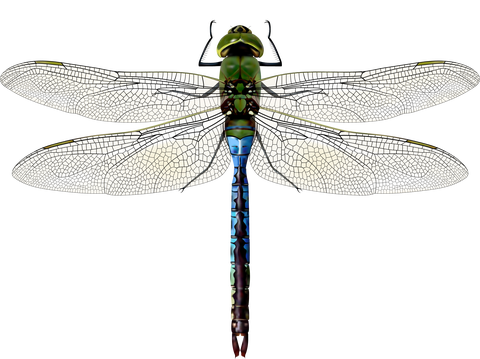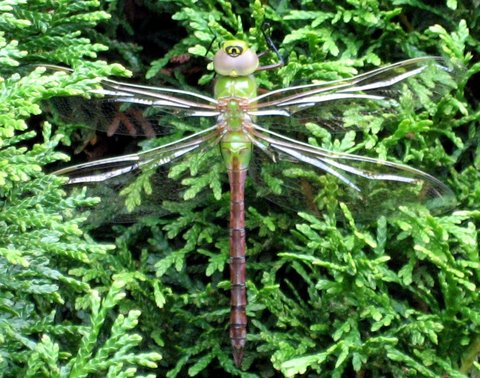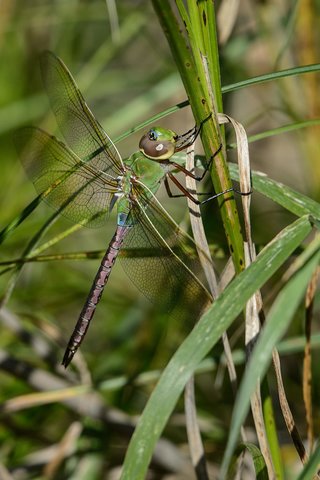Appearance
The common green darner dragonfly (Anax junius) is about three inches long and has a bright green thorax. Males and females can be distinguished by the color of their abdomens — males’ abdomens are an intense blue while females’ abdomens are reddish brown. Green darner naiads (or immatures) live in ponds and streams and have cylindrical bodies with long legs.
What does it eat?
Like other dragonflies, the green darner is a skilled aerial predator. They eat many types of flying insects, such as flies, gnats, moths, butterflies, mayflies, damselflies, mosquitoes, and even other smaller dragonflies. The aquatic naiads eat other small aquatic insects, and can even eat small fish and tadpoles.
Where and when do you find them?
The common green darner dragonfly is one of the most abundant dragonflies in North America. They are one of the first dragonflies to be seen in the spring, and can still be spotted through late fall, oftentimes near ponds and marshes.
Importance to Minnesotans
Like the monarch butterfly (the state insect of Minnesota), the common green darner dragonfly also migrates across the continent each year. These dragonflies leave Minnesota in July through October to head south. Once there, they lay eggs and die, but the new generation begins to make its way back up north in the spring. However, unlike monarchs, some green darners don’t migrate at all, and live their entire lives in Minnesota. These dragonflies overwinter as naiads in frozen over ponds and emerge as adults the next spring once the weather warms up again.
Fun Fact
The name Anax junius most directly translates to Lord of June, as Anax is a Greek word meaning lord, king, or master. Darner dragonflies (family: Aeshnidae) are also nicknamed “devil’s darning needles,” “mosquito hawks,” or “horse stingers,” although they don’t possess any stingers.
For more information
iNaturalist: Common Green Darner
Smithsonian: Dragonflies Embark on an Epic, Multi-Generational Migration Each Year
Odonata Central: Green Darner Dragonfly Sightings Map
Author
Hannah Bodmer
Photo credit
Hannah Bodmer (illustration and second image)
Craig Mullenbach, Flickr (photos 3 & 4)





